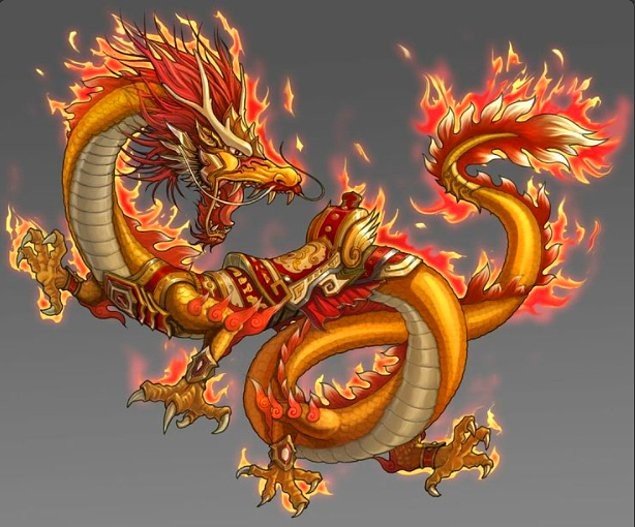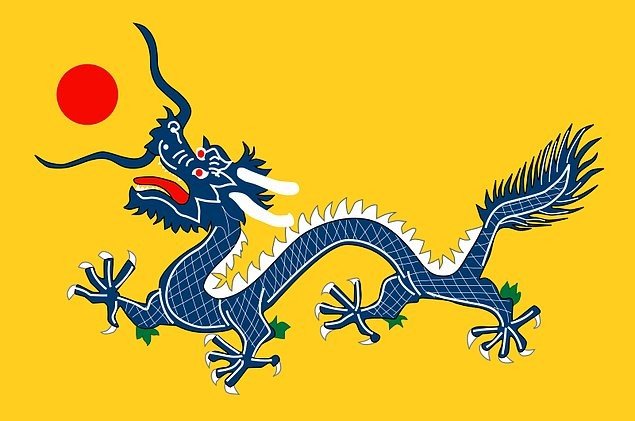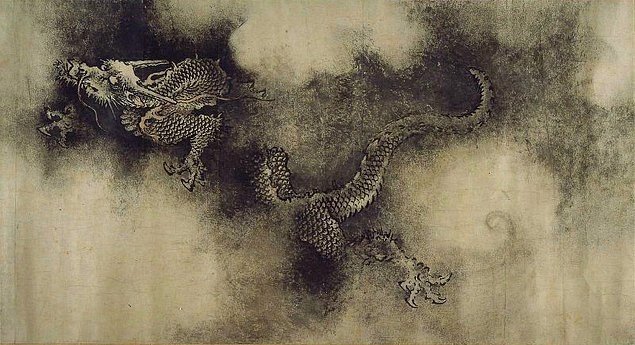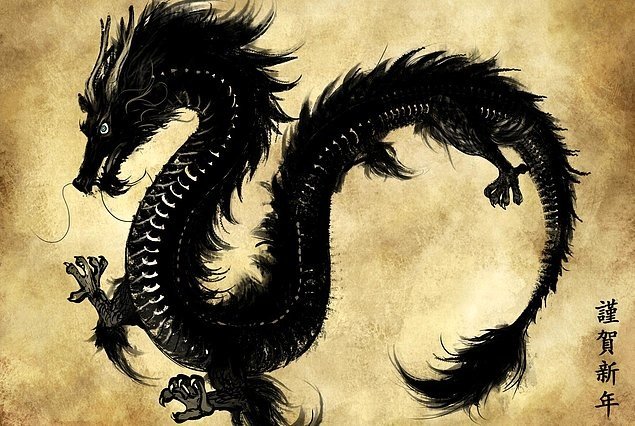Bugün sizlere çok merak ettiğim Doğu kültürü ve Batı kültüründe farklı işlenmiş bir mitolojik yaratıktan bahsedeceğim EJDERHALAR...
Pek çok kitabın, filmin, dizinin içerisinden fırlayıp hayatlarımıza girdiler. Özellikle fantastik tür tutkunlarının yakından tanıdıkları, Game of Thrones sayesinde çok daha geniş bir kitle tarafından bilinir olan ejderhaların dünyanın doğusunda ve batısında ne kadar farklı anlamlar barındırdıklarını öğrenmeye hazır mısınız?
Çin'de ve Güney Asya'da ejderhalar tıpkı Batı'daki gibi mitik yaratıklardır. Genel olarak dört bacaklı yılan formunda anlatılırlar. Heybetli kanatları olmasa da havada süzülebilirler.

Doğu Kültüründe Ejderha:
Uzak Doğu'da, özellikle Çin'de ejderha pek çok olumlu anlama sahiptir. Asaletin, iyi şansın, kudretin, gücün ve kutsallığın sembolüdür.
Çin kültüründe "Oğlun bir ejderha gibi olsun" şeklinde gündelik atasözleri vardır. Bazı insanlar çocuklarını Çin Takvimi'ne göre ejderha yılında doğurmak için çabalar.
Antik Çin'de hükümdarların ejderha soyundan geldiğine inanılırdı. Bu görsel Qing Hanedanı'nın bayrağı. Han Hanedanı'nın kurucusu Liu Bang'ın annesinin rüyasında bir ejderha gördükten sonra oğluna hamile kaldığı anlatılır.

Batı Kültüründe Ejderha:
Batı'nın ejderhası ateşin gücüne sahipken Doğu'nun ejderhası suyun gücünü elinde tutar. Ateş püskürtmez ama yağmur yağdırır. Ayrıca her türlü su kaynağının derinliklerinde yaşar.
Batı'nın ejderhası ise genellikle kertenkele veya yılan formunda tasvir edilir. Devasa kanatları vardır ve dehşet verici bir biçimde ateş püskürtür.
Batı'nın ejderhası şeytani bir kötülüğü temsil eder. Açgözlüdür. Mağaralarda ve kuytu köşelerde yaşar. Altın düşkünüdür.
Pek çok masalda, fantastik öyküde ve hatta dini öykülerde karşımıza çıkan Batılı ejderha yenilmesi şart kötücül bir yaratıktır. Prensin prensese ulaşmasına engel olur. Şeytanın ta kendisidir.
Batı'da ejderha pek çok kaynakta "serpent"e yani "yılan"a benzetilir, Hristiyan hikayelere göre Havva'yı baştan çıkaran da bir "serpent"tir. Yılan kültüyle ejderha korkusu örtüşür.
Yeni Ahit'in bölümlerinden biri olan "Vahiy Kitabı"nda Şeytan, "ateş kızılı, yedi kafalı ve on boynuzlu bir ejderha" olarak betimlenir.
Sonuç olarak ve Fark:
Doğu'nun ejderhaları insan dostudur ve insanın kaynağı olarak bilinir ama Batı'nın ejderhası amansız bir insan düşmanıdır. Ona zarar verir, onu yanlışa sürükler.
Doğayla bütünleşik yaşamayı gelenek edinmiş Uzak Doğu kültürü ejderhayı kendinden sayar ve sahiplenir. Batı kültürü ise geleneklerine uygun olarak anlamlandıramadığını ötekileştirir. Bu mitik varlıkları kötülüğün sembolü haline getirir.
Günümüzde kitaplarda ve dizilerde:
Batılı kurgu yazınlar içerisinde, Doğu'nun öğretilerinden son derece etkilenen Le Guin şeytani ejderha ezberini bozar. Le Guin'in ejderhaları kadim bilgiyi ve hakiki dili elinde tutar.
Le Guin'in ejderhaları, Tolkien'in Smaug'u gibi, Batılı etkiyle etrafına korku ve tehdit saçar. Fakat aynı zamanda Doğulu ejderhalar gibi bilge ve asildirler.


Sonuç olarak ejderhalar Doğu kültüründe dost canlısı, bilge ve asil anlamında, Batı kültüründe ise saldırgan ve şeytani bir varlık olarak gösterilmiştir.
ENGLİSH
I will be talking about a different mythological creature in East culture and Western culture which I am very worried about today ... EJDERHALAR ...
Many books, filmin, have jumped out of my knee and entered my life. Are you ready to learn how the dragons, familiar to a great variety of people, especially those familiar to a much wider audience thanks to the Game of Thrones, have different meanings in the east and west of the world?
In China and South Asia, dragons are mythic creatures just like in the West. They are generally described in the form of four-legged snakes. They can fly in the air without the imposing wings.

Dragon in Eastern Culture:
In the Far East, especially in China, dragons have many positive meanings. Your nobility is your symbol of good luck, power, strength and sanctity.
In Chinese culture there are everyday proverbs such as "Let your son be like a dragon". Some people try to breed their children in Dragon Age, according to Chinese calendar.
In ancient China, it was believed that rulers came from the line of dragons. This is the flag of the Qing Dynasty visually. The founder of the Han dynasty, Liu Bang, told her mother that she was pregnant with her son after seeing a dragon in her dream.

Dragon in Western Culture:
The dragon of the East holds the power of the dragon, while the dragon of the East holds the fire. It does not fire but it rains. It also lives in the depths of all kinds of water sources.
The dragon of the West is usually depicted in the form of lizards or snakes. He has gigantic wings and blows fire in a terrifying way.
The dragon of the West represents evil evil. It is greedy. He lives in caves and secluded corners. Gold is fond of it.
In many fairy tales, fantasy stories and even religious narratives, the Western dragon defeat is a bad creature. It prevents the princess from reaching the princess. The devil is himself.
In the west the dragon is likened to "serpent" in many sources, that is to say "serpent", and according to the Christian story it is a "serpent" that seduces Eve. The fear of the dragon overlaps with the snake cult.
In the Book of Revelation, one of the divisions of the New Testament, Satan is depicted as "a fire dragon, a seven-headed and ten horned dragon".
As a result and Difference:
The dragons of the East are human friends and are known as the source of man, but the dragon of the West is a relentless human enemy. He hurts him, he drifts away.
Far Eastern culture has acquired the tradition of life integrated with nature and counts the dragon itself and owns it. Western culture, on the other hand, can not be understood in accordance with tradition. This myth makes the beings a symbol of evil.
In today's books and series:
In Western fiction writing, Le Guin, the devilish dragon, who is highly influenced by the teachings of the East, breaks the memorization. The dragons of Le Guin hold the knowledge of the woman and the true language.
The dragons of Le Guin, like Tolkien's Smaugu, wield fear and threats around Western influence. But at the same time they are wise and hung like Eastern dragons.


As a result, dragons have been shown as friendly, wise and noble in Eastern culture and aggressive and evil in Western culture
Kaynak: https://onedio.com/haber/15-maddeyle-ejderhalarin-gizemli-dunyasina-yolculuga-cikiyoruz-747864
Ideal tatoo
Downvoting a post can decrease pending rewards and make it less visible. Common reasons:
Submit